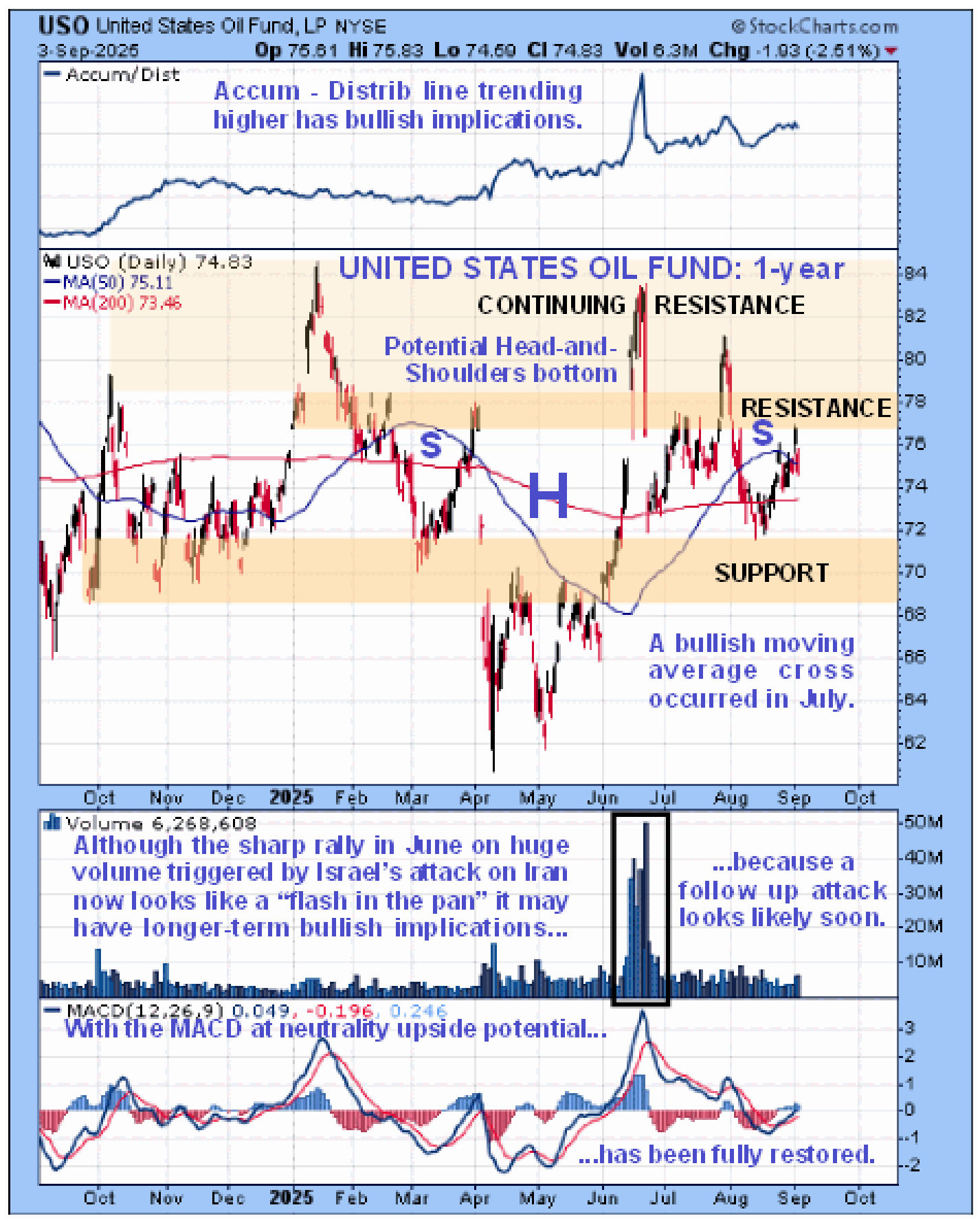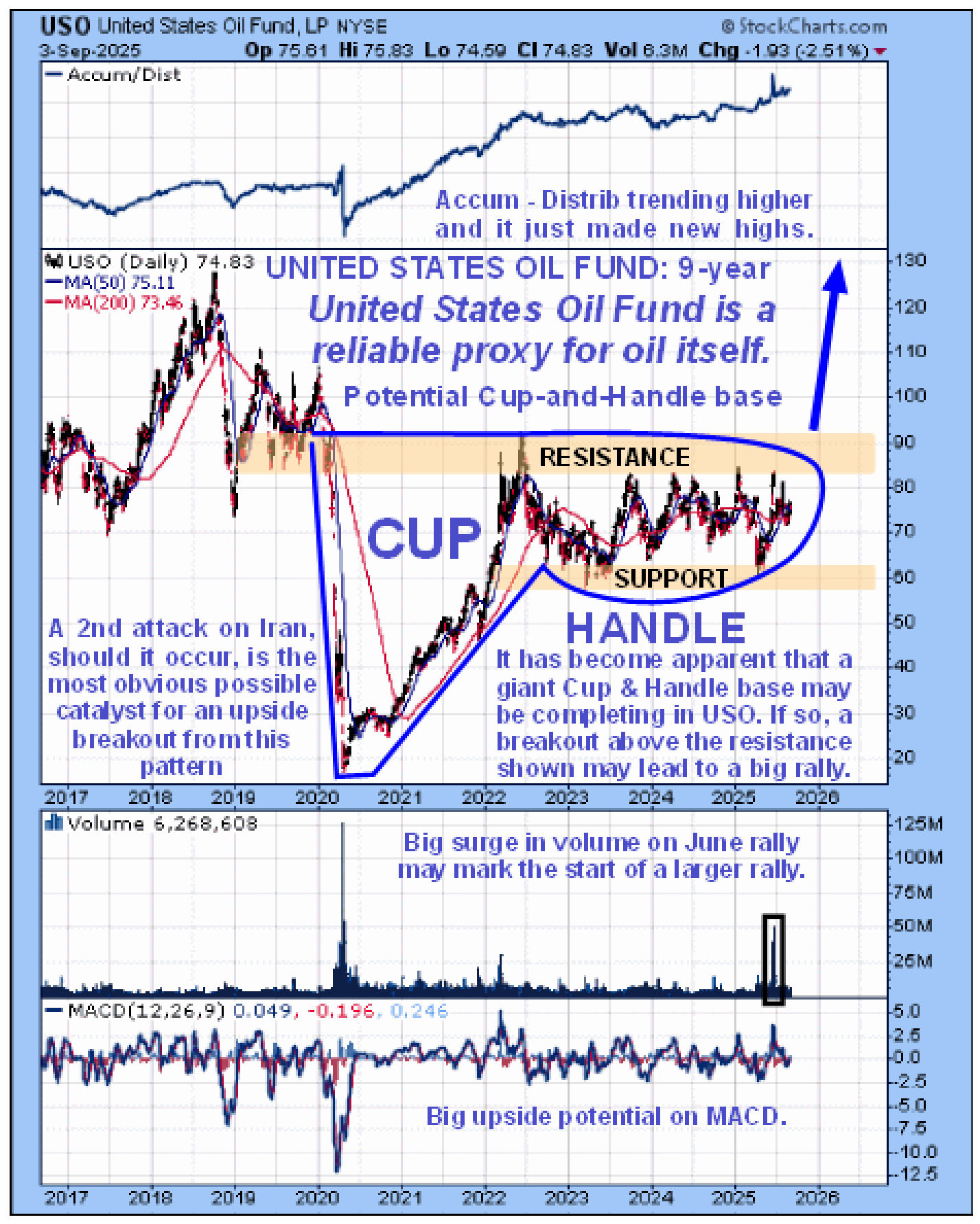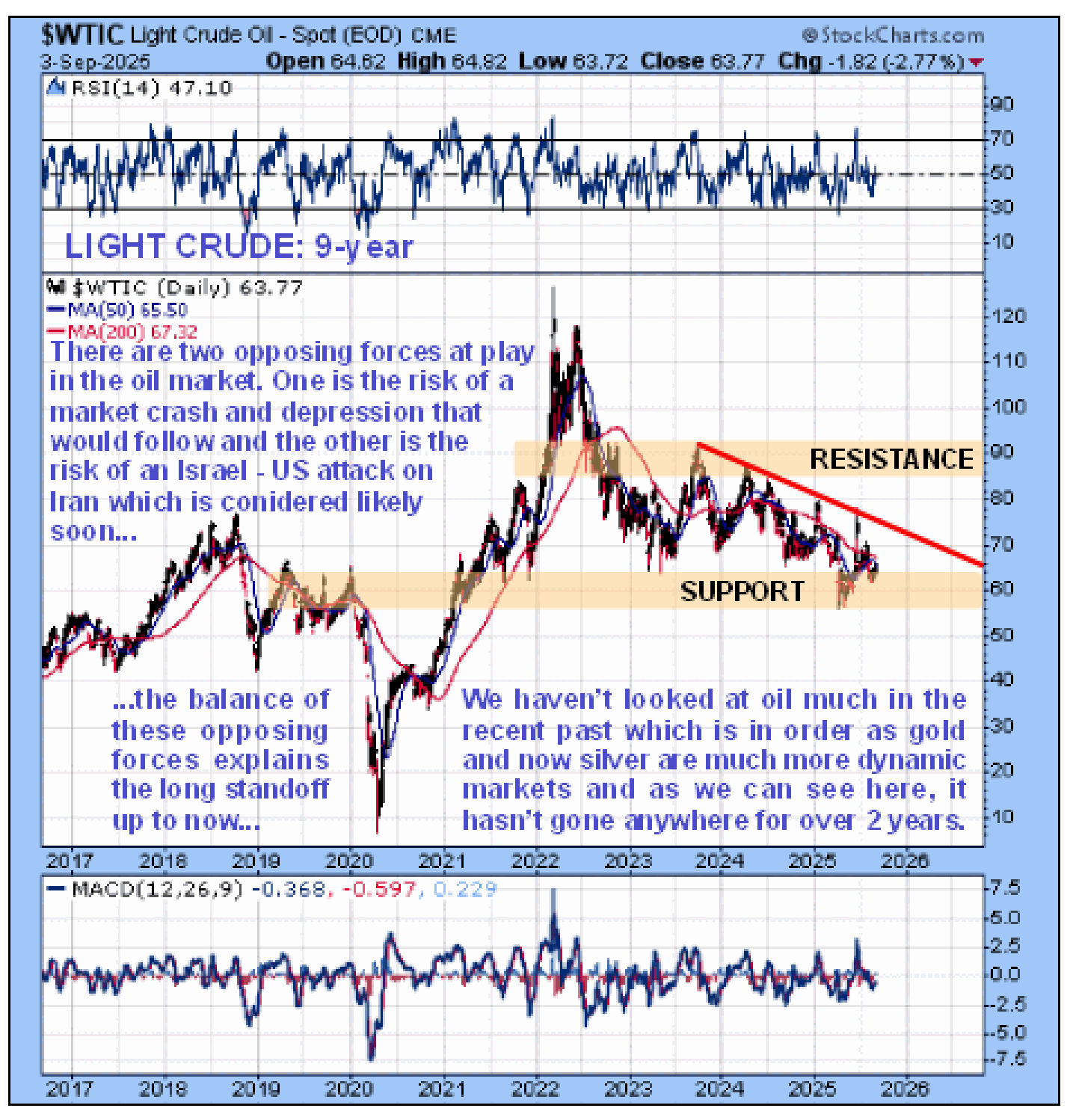We haven’t looked at oil for a while, about 6 weeks, which matters little because it hasn’t done much since we last looked at it, which was about 6 weeks ago. Instead our attention was focused where it should be at this time, which is on the Precious Metals sector. In the last Oil Market update we thought that an attack on Iran might happen soon – it hasn’t - yet – but it is still considered to be likely soon and if another attack on Iran does occur it could drive a spike in the oil price.
There are several reasons why Israel and the US, who can be regarded in geopolitical and military terms as the same entity, are intent on attacking and neutering Iran. One is that it is the last remaining obstacle standing in the way of the Greater Israel Project which would see Israel expand its territory greatly at the expense of its neighbors so that it becomes the dominant force in the Mid-East. Another is that Iran has big oil reserves which Israel and the US covet and would very much like to take control of. This would enable them to deny China oil – China imports a large proportion of its oil from Iran – or charge it exorbitant rates to buy it. Finally, taking Iran would be a flanking move enabling them to encroach on and threaten Russia from the south.
The problem for Israel and the US, and for the West generally, is that they are fighting the clock – the Western financial system is teetering on the verge of collapse due to the increasingly acute debt crisis because debts have grown to colossal unserviceable levels. So they are moving to assert global hegemony by force while they still have the power to do so. This is an underlying reason for the Ukraine proxy war against Russia, whose objective is to weaken Russia so that it can later be overrun and plundered for its rich resources. However, this isn’t going too well for them. Russia has gotten stronger, not weaker and in a calculated and patient war of attrition it has ground down Ukraine’s military which is on the verge of collapse with 1.8 million Ukrainian troops dead and destroyed hundreds of billions of dollars worth of western military equipment, which, since it is made for profit rather than actual defense is very costly and logistically impossible to replace. So this year they decided that they would try their hand at taking down Iran. Although Israel inflicted some heavy damage in the 12-day war due to its surprise attack that marked the start, the tables were turned on them when Iran lambasted Israel with volleys of sophisticated missiles. This caused them to back off but they haven’t given up. Goaded on compulsively by the shining vision of a Greater Israel they have used the time to ship over vast quantities of weapons from the US in readiness to give it another go, this time possibly employing theater nuclear weapons. During this period Iran hasn’t been sat on its hands either – it has been beefing up its weapons systems and apparently bringing in sophisticated missile systems from China and Russia. It’s a very dangerous situation because if Israel launches another attack on Iran it could wind up being completely destroyed but strangely this doesn’t seem to deter them.
The reason that we are considering these geopolitical factors is because they of course have a direct bearing on the outlook for the oil price. On the one hand a market crash, perhaps this Fall, which will happen if Central Banks do not continue to pump out new money at a prodigious rate, would trigger a plunge in the oil price due to the prospect of a global economic depression, as happened in 2008 and again during the Covid Crash in the Spring of 2020 when mass paranoia caused the oil price to drop almost to zero. On the other hand, an attack on Iran, depending on what it leads to – Iran could block the Strait of Hormuz – could lead to a dramatic spike, even if it is relatively short-lived. It looks like the balance of these major conflicting forces is what has led to oil essentially being range bound since late 2022.
Now we will proceed to look at the latest charts to see what they have to say and we will mainly be using the charts for the United States Oil Fund (code USO) as a proxy because the Stockcharts oil charts do not show volume or volume indicators. Note, however, that this is not such an exact proxy as iShares Silver Trust (SLV) is for silver and you will notice the difference when we look at the 9-year charts.
Starting with the 1-year chart for USO we can see that dramatic but rather short-lived spike in June when Israel attacked Iran and it counter attacked. When this 12-day conflict ended, the price dropped back to the zone of strong support shown. After this, we figured a 2nd assault on Iran would begin quite soon but nothing has happened so far, probably for logistical reasons, but another attack is still “on the cards” as mentioned above which probably why the price pattern on this chart looks much the same. We can also see that, within the giant Handle trading range that has formed from 2022, a potential Head-and-Shoulders bottom pattern has formed this year, an interpretation that is supported by the heavy volume driving the June rally to form the right side of the Head of the pattern. Clearly, if there is a 2nd assault on Iran, it could make such a move again, and depending on what it leads to, the move could be much greater next time.

Long-term charts are useful as they enable us to get a Big Picture perspective on what is going on. Thus, on a 9-year chart for USO we can see that a giant skewed Cup & Handle base appears to have formed, although this pattern is not so evident on the chart for oil itself. Although, like any technical formation, these patterns can sometimes abort, the favorable volume pattern and uptrending Accumulation line suggest a better then even probability that it will break above the zone of resistance marking the upper boundary of this pattern before too much longer to commence a possibly substantial uptrend which could be provoked by a serious disruption in the supply of oil and here, in addition to the situation with Iran, what is now going on with respect to Venezuela may have increasing relevance – and we should not forget that there are powerful vested interests that benefit from a high oil price who are not above conspiring to bring it about, regardless of the consequences elsewhere.

The 9-year chart for Light Crude looks somewhat weaker than that for USO although we don’t have the benefit of seeing the volume pattern or volume indicators and the pattern that we have observed on the USO chart is hard to discern on this one. A couple of observations that we can make are that a break above the red downtrend line will be a positive development while a break below the support down to $56 would be negative, especially if compounded by USO by breaking below the support at the lower boundary of its recent large trading range centered on $69. A break above the resistance at $90 would lead to potentially dramatic upside acceleration.

Although this assessment of the situation is obviously something of an either / or judgement of the situation, which is hardly surprising as it depends on highly unpredictable events and outcomes, at least we won’t be taken by surprise whatever happens. I am confident that the more sophisticated amongst you will be able to work out trading strategies to handle this situation.
End of update.
Posted at 12.20 pm EDT on 4th September 25.


